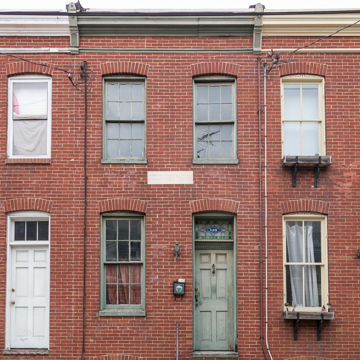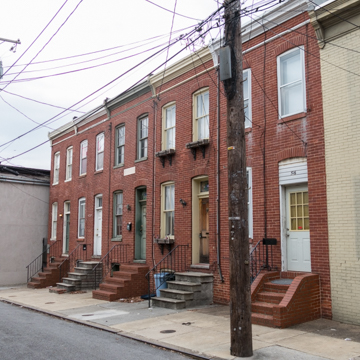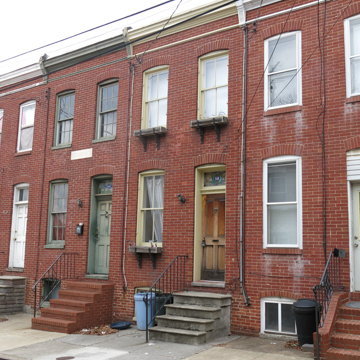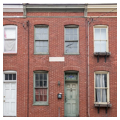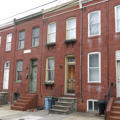This group of five modest row houses was built by prominent abolitionist and activist Frederick Douglass as an investment property. Their location in a narrow alley illustrates the use of these spaces for worker housing in Baltimore before this practice was outlawed in the early twentieth century. Each house is two-stories high and two bays wide on a raised basement, with a one-story ell at the rear. While small, the houses were up-to-date with vernacular Italianate features such as sheet metal cornices with brackets and segmental-arched door and window openings. In typical Baltimore fashion, the houses front directly on the side-walk with a brick stoop leading to the doorway.
Although Douglass lived at his Cedar Hill estate in Washington, D.C., during this period, he had a longstanding connection to the Fell’s Point neighborhood of Baltimore, having lived here when he was enslaved starting in the mid-1820s. During this period he secretly learned to read and attended the Dallas Street Station Methodist Episcopal Church, which stood on the site of Douglass Place. Before his escape from slavery in 1838, he was returned to fieldhand work on the Eastern Shore, where he taught other enslaved persons to read. Douglass built the five houses on South Dallas Street to provide good quality rental housing for Black or immigrant workers, but the economic downturn of 1893 impacted the success of his venture. After his death in 1895, Douglass’s heirs sold the row to a group of local investors.
References
Hayward, Mary Ellen, and Charles Belfoure. The Baltimore Rowhouse. New York: Princeton Architectural Press, 2001.



